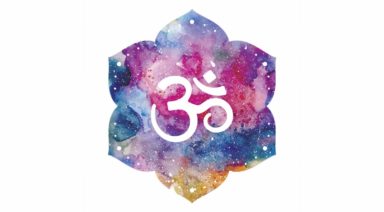3 Ways To Set An Intention In Your Yoga Practice

Yoga is about living a more mindful and intentional life.
I started doing yoga in 2004, and the idea of living a more mindful and intentional life was partly the reason I got into it. I was certainly attracted by the physical side; from the outside, it looked a bit like gymnastics, and ever since kindergarten I had always wanted to be gymnastic star.
However, the body-mind connection I had heard so much about is what really brought me to that first class in the yoga studio. De-stress? Quiet the mind? Develop better awareness? I didn’t know how we were going to do any of that, but it sounded good to me.
The first thing the teacher said in the first class was, “We’ll start by taking a moment to set an intention for your practice.” I drew a total blank. I had no idea what setting an intention meant. I intend to get better at yoga. I intend not to look like a fool in this class. I intend to pick up a latte on my way home. Clearly I didn’t quite get it.
Over the following years, as I learned and grew in my yoga practice, I continually struggled with the basic concept of setting an intention. I would often throw something out there like, “I’m here to dedicate this hour to myself; “I’m here to escape my stressful life”; “My intention is to sweat”; usually not with a lot of thought behind it and always with a self-centered approach.
It wasn’t until I attended my yoga teacher training with the inspiring Paul Dallaghan that I finally really got some value out of setting an intention for my practice. He didn’t actually word it as setting an intention; and perhaps that’s why it seemed less confusing for me. But every morning, before practice, we spent a few moments reflecting on three powerful categories, which I share with you below.
It’s important to note that we didn’t spend 10 minutes thinking about this stuff everyday (who has that kind of time in the real world anyways?); but two to three breaths per category, which is enough, especially if you’re doing it every time.
-
Gratitude: Even in stressful or impossibly tough times, we are lucky to have something in our lives. These are the things that make life a little easier, a little more enjoyable and that make you a happier person. Take a few breaths to focus on the things, the people and the situations in your life that you are grateful for.
-
Forgiveness: Let’s face it: none of us are perfect. We’ve wronged people, and people have wronged us. Its not always intentional and unfortunately, it’s just the way the world works. Take a few breaths to reflect on the things you’d like to be forgiven for, and sending a few forgiving thoughts towards people who have wronged you. In short, this just means letting go. Holding onto bad feelings just doesn’t do us any good.
-
Guidance: In life, we can’t do it all alone. Sometimes we just need help. Reflecting on this helps us to realize that we need help (which is half the battle sometimes!) and makes us much more likely to look in the right places for help. Take a few breaths to think about what you need help with.
Reflecting on these three categories has become integral to my practice, and often forms the beginning or end of the sequence when I’m teaching. It links my yoga practice to the other important things in my life. It also reminds me to put things in perspective and gives a much deeper meaning to those few moments at the beginning or end of my yoga practice when I let go of the stress of my day and focus on what I came to do: my practice.
Daily Self-Love Mantras & Positive Affirmations for Inner Peace

Who do you spend the most time with? Your spouse or best friend? Your children or your co-workers? Technically neither. You spend the most time with yourself, which is why the tone and content of your internal dialogue are incredibly important to how you feel about yourself.
For instance, if you do poorly on an exam or a performance review, there are different ways you can talk to yourself about the situation. One reaction would be to say to yourself, “I am such an idiot. I am not smart enough to succeed.” Another way to respond is to say to yourself, “I am smart. I will figure out how to overcome this setback and do better next time.”
The first example illustrates negative self-talk, which has been proven to negatively impact the outcome of tasks that hold significance in your life and your overall emotional well-being. Conversely, the person in the second example is more likely to do better next time because they didn’t let it define how they view their true self or give into self-doubt. They were able to separate the obstacle from their own self-worth.
Another time this is prevalent is after a break-up or falling out with a friend. After being rejected by a loved one, it can be all too easy to forget that just because one person doesn’t love you anymore, it doesn’t lessen your self-worth. In both of these instances, self-love mantras can be used to replace negative thoughts and rebuild your self-confidence.





































